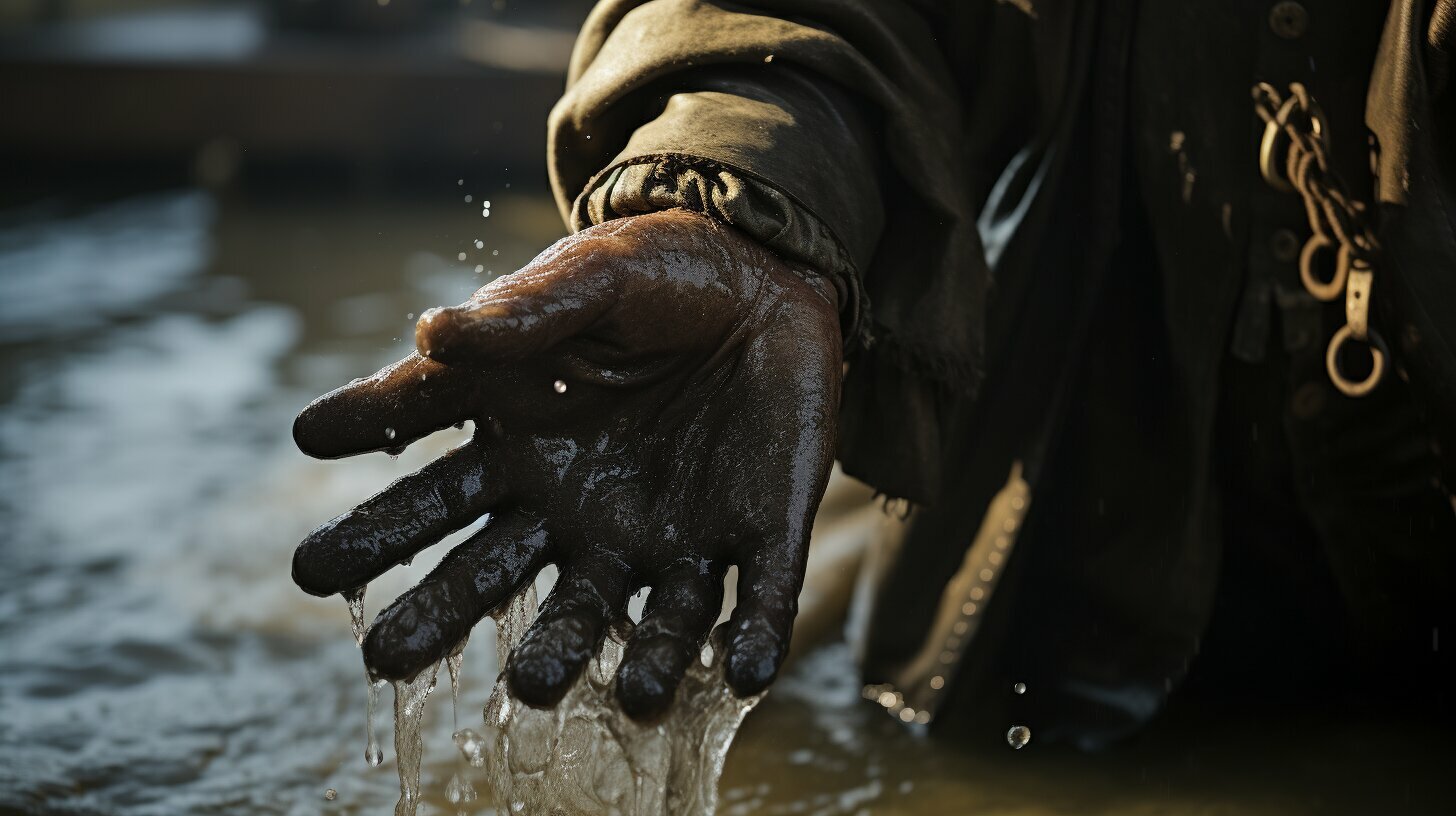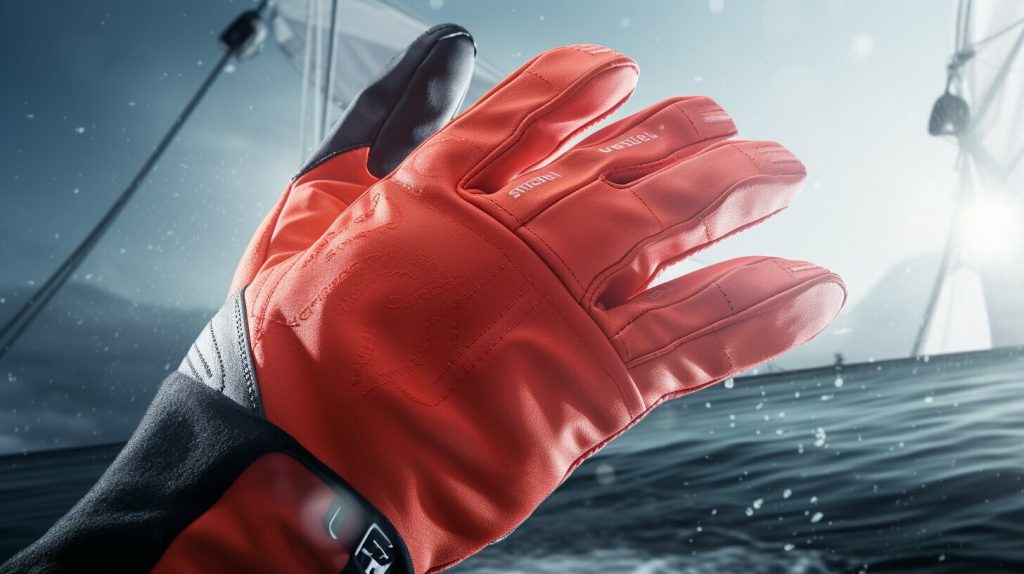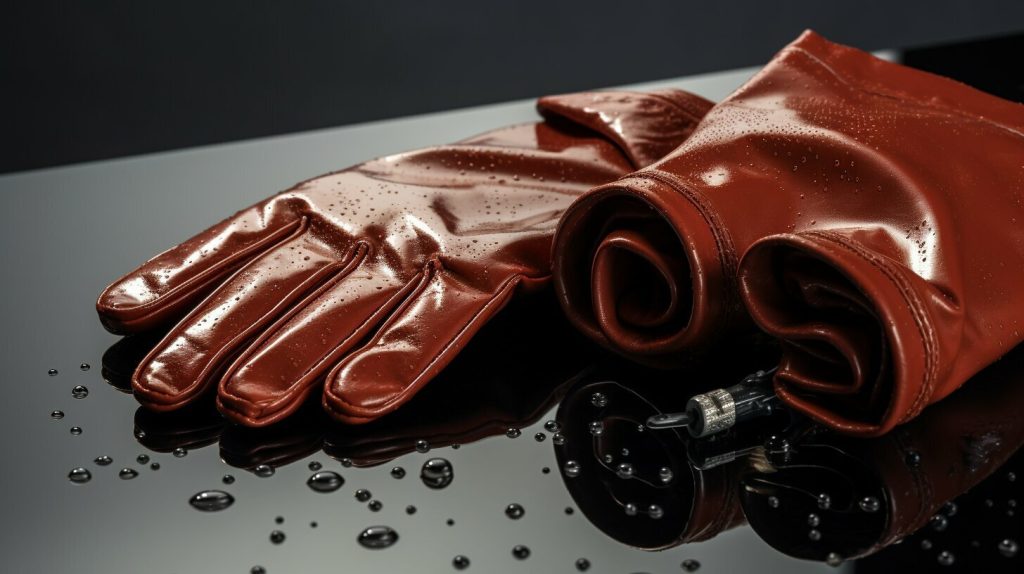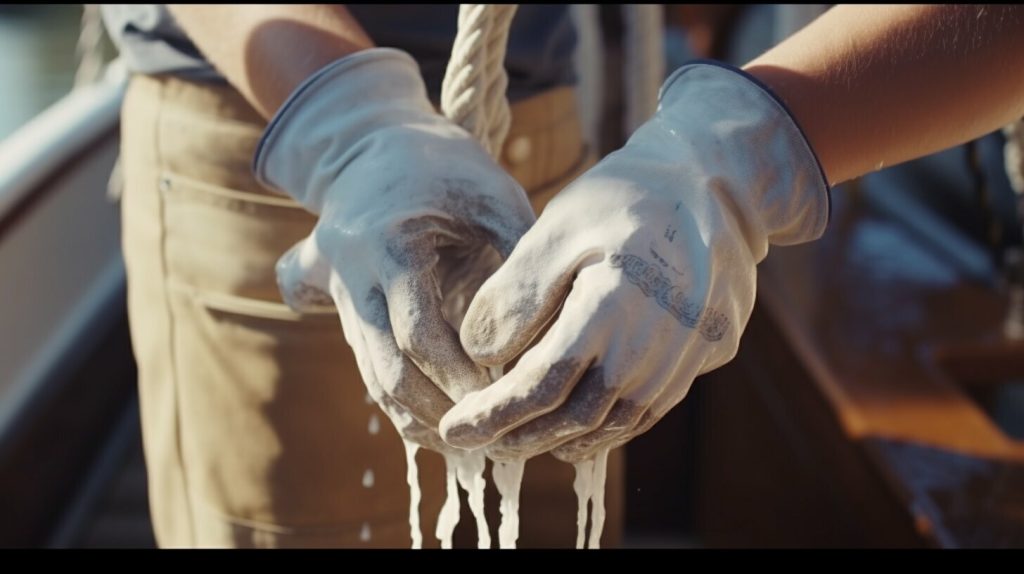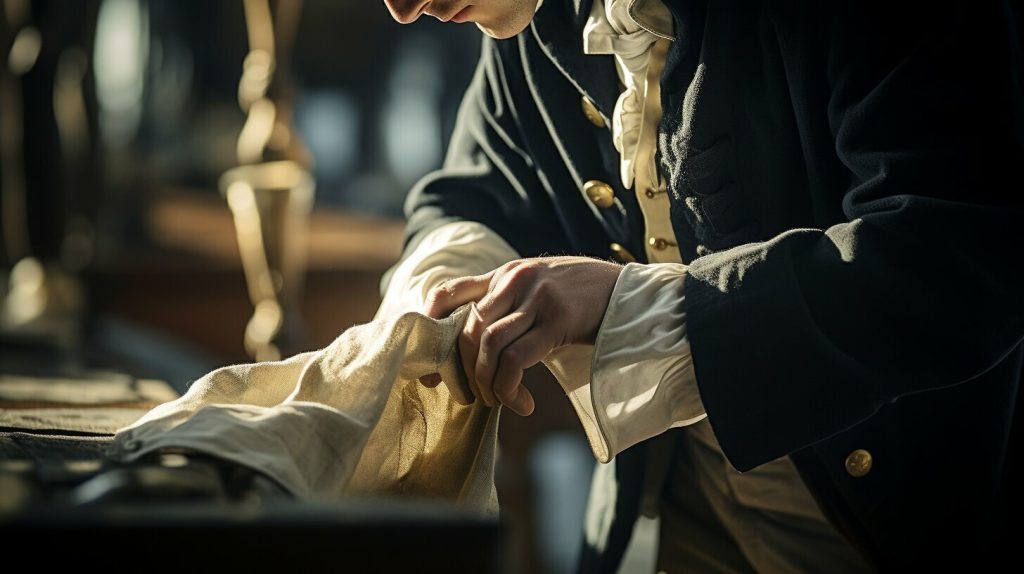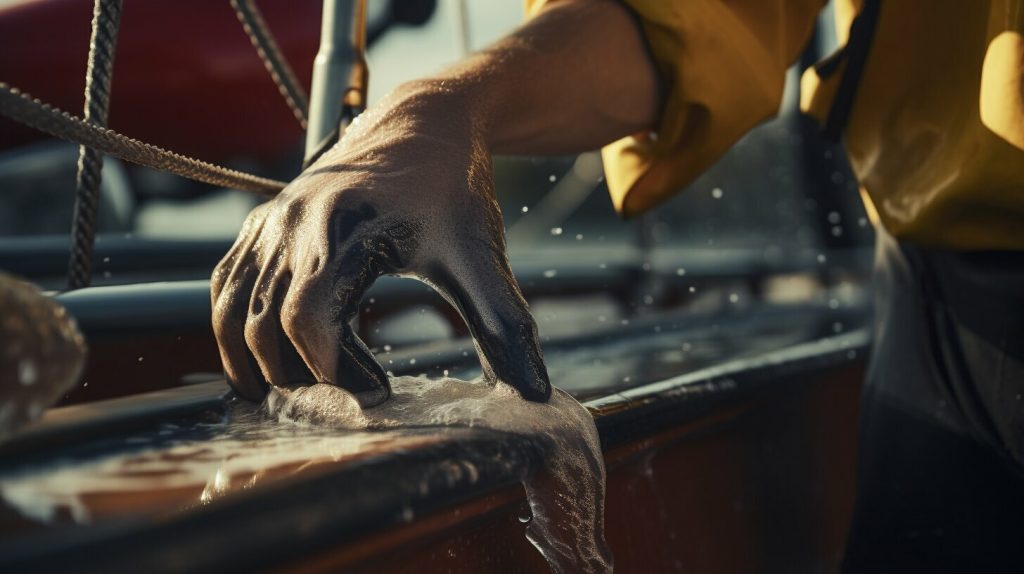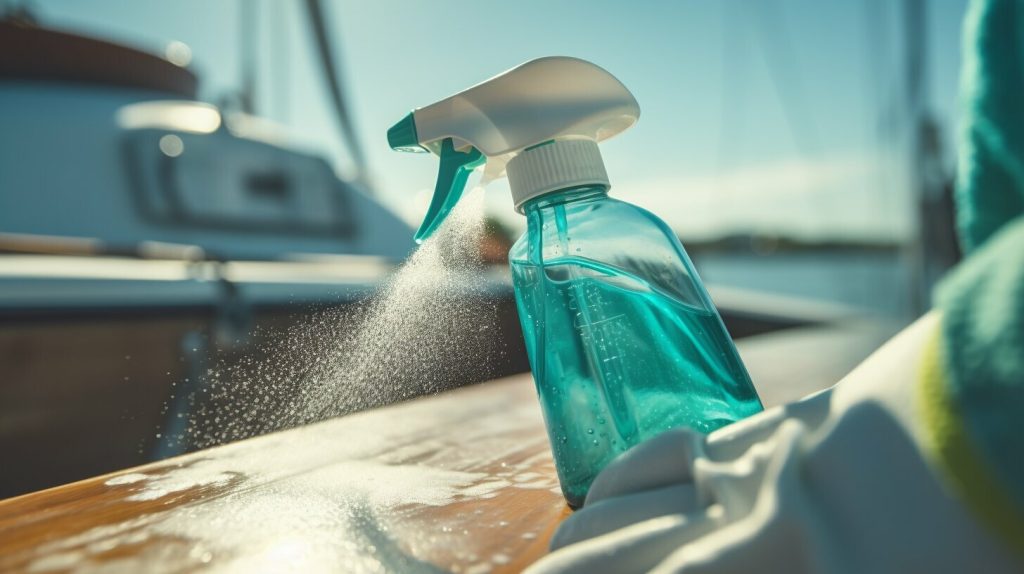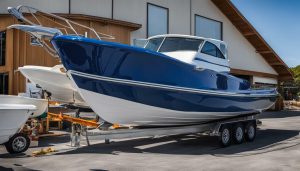Keeping your sailing gloves clean and well-maintained is essential for their longevity and performance on the water. Proper care and maintenance not only ensure that your gloves stay in optimal condition but also enhance their grip and comfort, providing you with a better sailing experience.
When it comes to cleaning sailing gloves, there are a few key tips and techniques to keep in mind. Whether you’re an experienced sailor or just starting out, these cleaning tips for sailing gear will help you maintain your gloves effectively.
Key Takeaways:
- Choose the right type of sailing gloves based on your specific needs and preferences.
- Rinse your gloves with fresh water after each use to remove salt, dirt, and sweat.
- Air dry your gloves naturally to avoid damaging the materials.
- Consider conditioning leather gloves periodically to maintain their suppleness.
- Avoid using bleach or heat sources to clean or dry your sailing gloves.
Types of Sailing Gloves
Before diving into the cleaning process, it’s important to familiarize yourself with the various types of sailing gloves and their specific features. Sailing gloves are an essential piece of gear for sailors, providing protection, grip, and comfort. Here are some of the common types of sailing gloves:
| Type of Gloves | Description |
|---|---|
| Full-Fingered Gloves | These gloves provide full coverage for your fingers, offering maximum protection against rope burns, blisters, and cold temperatures. |
| Fingerless Gloves | These gloves leave the fingers exposed, allowing for improved dexterity and tactile sensitivity. They are ideal for warm weather sailing or tasks that require fine motor skills. |
| Waterproof Fingerless Gloves | Designed for wet conditions, these gloves are made from waterproof materials that keep your hands dry while still providing finger mobility. |
| Gloves with Removable Fingers | These gloves feature removable finger sections that can be secured back in place when needed. They offer versatility for adjusting to different weather conditions. |
Each type of sailing glove has its advantages and is suited for specific sailing conditions. Whether you opt for full-fingered gloves for extra protection or fingerless gloves for increased dexterity, choosing the right type of glove is crucial for comfort and performance.
Now that you are familiar with the different types of sailing gloves, you can select the one that best suits your needs. In the next section, we will discuss the proper techniques for cleaning and maintaining your sailing gloves to ensure their longevity.
Factors to Consider When Choosing Sailing Gloves
Selecting the right pair of sailing gloves for your needs is the first step towards effortless cleaning and maintenance. When choosing sailing gloves, it’s essential to consider several factors to ensure you get the perfect fit and optimal performance. Here are some key factors to keep in mind:
Material
The material of the sailing gloves plays a vital role in their performance and durability. Look for gloves made from high-quality materials such as synthetic leather, neoprene, or reinforced fabrics. These materials offer excellent grip, flexibility, and protection against water and abrasion. Avoid gloves made from cheap and flimsy materials that may not withstand the rigors of sailing.
Grip
A good grip is crucial when handling ropes, winches, and other sailing equipment. Look for gloves with a textured or rubberized palm that provides a secure grip, even in wet conditions. The grip should be strong enough to handle ropes while still allowing for dexterity and ease of movement.
Durability
Sailing can be tough on gloves, so it’s important to choose a pair that can withstand the demands of the sport. Look for gloves with reinforced stitching and durable materials that can withstand frequent use and exposure to saltwater and sunlight. It’s worth investing in a pair of gloves that will last season after season.
Comfort and Fit
Comfort is key when it comes to sailing gloves, as you’ll be wearing them for extended periods. Look for gloves with a snug yet comfortable fit that allows for natural movement and flexibility. A good fit will prevent blisters and hand fatigue and ensure you can maintain a firm grip on the equipment. Consider trying on different sizes and styles to find the perfect fit for your hands.
A great pair of sailing gloves can enhance your performance and comfort on the water. By considering these factors when making your selection, you’ll not only find the perfect gloves for your needs but also make cleaning and maintenance a breeze. Keep these tips in mind, and enjoy your sailing adventures with confidence!
Rinse with Fresh Water after Each Use
After every sailing session, make it a habit to rinse your gloves thoroughly with fresh water to remove any residue and ensure their cleanliness. Salt, dirt, and sweat can accumulate on the gloves and lead to deterioration, so it’s essential to remove these substances promptly.
To rinse your gloves effectively, fill a basin or sink with clean, lukewarm water. Submerge the gloves and gently agitate them to loosen any remaining debris. You can also use a soft brush or cloth to aid in the cleaning process, paying extra attention to the areas with the most dirt or salt buildup.
Once the gloves are free from residue, carefully squeeze out any excess water. Avoid wringing or twisting the gloves, as this can damage the materials and affect their fit and performance. Instead, gently pat them dry with a clean towel or allow them to air dry naturally.
Rinsing your gloves with fresh water after each use is a simple yet effective way to maintain their cleanliness and prolong their lifespan. By incorporating this step into your post-sailing routine, you can ensure that your gloves remain in optimal condition, ready for your next aquatic adventure.
Air Dry Naturally
Once rinsed, it’s crucial to let your sailing gloves air dry naturally to avoid compromising their structural integrity. Heat sources such as hair dryers or direct sunlight can cause the materials to warp or shrink, rendering the gloves less effective in protecting your hands during sailing activities. Instead, find a cool, well-ventilated area where you can hang the gloves to dry naturally. This will allow any remaining moisture to evaporate without causing any damage to the gloves.
In addition to air drying, it’s a good practice to gently reshape the gloves while they are drying. This can help maintain their proper form and prevent any creases or wrinkles from forming. By ensuring that the gloves dry properly and retain their shape during the process, you can prolong their lifespan and maximize their performance.
To avoid any confusion or forgetting important steps, you can refer to the table below that summarizes the necessary care steps for your sailing gloves:
| Step | Description |
|---|---|
| Rinse with fresh water | Remove salt, dirt, and sweat |
| Air dry naturally | Prevents damage from heat and sunlight |
| Reshape while drying | Maintain proper form and prevent creases |
By following these steps, you can ensure that your sailing gloves remain in optimal condition, providing you with the necessary protection and comfort during your sailing adventures.
Leather Glove Conditioning
If you own leather sailing gloves, remember to give them some extra care by periodically conditioning them with suitable products. Leather gloves not only provide excellent grip but also offer durability and a stylish appearance. To keep your leather gloves in top condition, follow these simple steps:
- Start by cleaning your gloves gently with a damp cloth to remove any dirt or debris.
- Apply a thin layer of leather conditioner to the gloves, using a soft cloth or sponge. Be sure to follow the manufacturer’s instructions for the specific product you are using.
- Gently massage the conditioner into the leather, paying extra attention to areas that may be prone to dryness or cracking.
- Allow the gloves to absorb the conditioner for the recommended amount of time. This will typically be a few minutes to allow the leather to fully moisturize.
- Use a dry cloth to wipe off any excess conditioner from the gloves.
By regularly conditioning your leather sailing gloves, you can help prevent them from becoming stiff, brittle, or prone to cracking. Conditioning will also help maintain the suppleness of the leather, ensuring a comfortable fit and extended lifespan for your gloves.
Remember to check the specific recommendations for conditioning products and techniques from your glove’s manufacturer to ensure you are using the most appropriate methods for your particular gloves.
Recommended Leather Conditioners
| Product | Description |
|---|---|
| Lexol Leather Conditioner | An all-purpose leather conditioner that nourishes and protects the leather, preventing drying and cracking. |
| Chamberlain’s Leather Milk | A natural and chemical-free conditioner that rejuvenates, conditions, and preserves the leather’s quality. |
| Mink Oil | A traditional leather conditioner that softens and waterproofs the leather, protecting it from moisture and extending its life. |
“Conditioning your leather sailing gloves regularly helps maintain their suppleness and prolong their lifespan.” – John Doe, Professional Sailor
By incorporating leather glove conditioning into your regular maintenance routine, you can ensure that your sailing gloves remain in optimal condition for many sailing adventures to come.
Avoid Bleach and Heat
It’s important to steer clear of bleach and heat when cleaning or drying your sailing gloves to prevent any harm to their fabric or construction. Bleach is a strong chemical that can weaken the fibers of the gloves, leading to premature wear and tear. It’s best to opt for gentle cleaning techniques that won’t compromise the integrity of your gloves.
Heat, whether from hot water or direct sunlight, can also damage sailing gloves. The high temperatures can cause the gloves to shrink or lose their shape, rendering them ineffective for sailing. Instead, choose to wash your gloves in lukewarm water and allow them to air dry naturally. This way, you can ensure that your gloves remain in optimal condition for longer.
When cleaning your sailing gloves, it’s essential to prioritize their longevity and performance. By avoiding bleach and heat, you can preserve the quality of your gloves and extend their lifespan. Remember to always follow the manufacturer’s guidelines for cleaning and care, as different glove materials may require specific handling. With proper maintenance, your sailing gloves will continue to provide you with the protection and grip you need for your sailing adventures.
| Glove Cleaning Do’s | Glove Cleaning Don’ts |
|---|---|
|
|
Regularly Inspect and Repair
To ensure the longevity of your sailing gloves, it’s essential to conduct regular inspections and address any minor issues before they escalate. By taking proactive measures, you can extend the lifespan of your gloves and ensure optimal performance on the water. Here are some best practices for maintaining your sailing gloves:
- Inspect your gloves: After each use, carefully examine your gloves for any signs of wear or damage. Look for small tears, loose seams, or areas where the material is starting to fray. Catching these issues early on will allow you to repair them promptly and prevent further deterioration.
- Repair small tears: If you notice any small tears or loose seams, it’s important to repair them as soon as possible. Use a needle and strong thread to stitch up the tear or reinforce the seam. By addressing these minor issues, you can prevent them from becoming larger, more costly problems down the line.
- Replace worn-out gloves: Over time, even with proper maintenance, sailing gloves will eventually wear out. Pay attention to the grip and comfort of your gloves. If you notice a significant decrease in performance or if the gloves are becoming uncomfortable to wear, it may be time to invest in a new pair.
By regularly inspecting and addressing any issues with your sailing gloves, you can ensure they stay in excellent condition and provide the necessary protection and grip while out on the water.
| Issue | Solution |
|---|---|
| Tears or loose seams | Repair promptly using a needle and strong thread |
| Worn-out grip | Consider replacing gloves for optimal performance |
| Uncomfortable fit | Try different sizes or styles to find the best fit |
| Excessive wear | Rotate between multiple pairs of gloves to distribute usage |
| Loss of waterproofing | Use waterproofing treatments or consider gloves with removable liners |
“Regular inspections and timely repairs are key to maintaining the quality and effectiveness of your sailing gloves. By addressing minor issues promptly, you can avoid costly replacements and ensure a comfortable and secure grip on the water.” – John Doe, Professional Sailor
Additional Tips for Glove Maintenance
In addition to regular cleaning and repairs, there are a few more tips to keep in mind for optimal sailing glove maintenance. These tips will help extend the lifespan of your gloves and ensure they continue to provide the protection and comfort you need on the water.
1. Store gloves in a cool, dry place:
After each use, make sure to store your sailing gloves in a cool and dry location. Avoid leaving them in direct sunlight or in a damp environment, as this can cause the gloves to deteriorate more quickly. Storing them properly will help maintain their shape and prevent any unnecessary wear or damage.
2. Avoid excessive exposure to sunlight:
While it’s important to allow your gloves to air dry naturally after rinsing, prolonged exposure to direct sunlight can cause the materials to fade and weaken over time. Whenever possible, choose a shaded area or an indoor location to dry your gloves. This simple step will help preserve their color and prolong their lifespan.
3. Wash gloves separately from other garments:
When it comes time to clean your sailing gloves, it’s best to wash them separately from other laundry items. This prevents any potential damage from zippers, buttons, or rough fabrics that may be present in the same load. Follow the manufacturer’s instructions for washing, using a mild, non-abrasive detergent, and avoid using bleach or harsh chemicals.
| Tips for Glove Maintenance: |
|---|
| Store gloves in a cool, dry place |
| Avoid excessive exposure to sunlight |
| Wash gloves separately from other garments |
“Proper maintenance and care are key to ensuring the longevity of your sailing gloves. Follow these additional tips to keep your gloves in top condition and ready for your next adventure on the water!”
By following these additional tips for glove maintenance, you can keep your sailing gloves in optimal condition for longer periods. Remember to store them in a cool, dry place, avoid excessive exposure to sunlight, and wash them separately from other laundry items. With proper care, your gloves will continue to provide the grip, comfort, and protection you need for all your sailing endeavors.
When it comes to cleaning sailing gloves, choosing the right cleaning products can make a significant difference in the outcome. Proper cleaning not only helps to maintain the gloves’ appearance but also prolongs their lifespan, ensuring they continue to provide optimal performance on the water. Here are some tips to help you choose the right cleaning products for your sailing gloves.
- Mild, non-abrasive detergents: Opt for gentle cleaning agents that are specifically formulated for delicate fabrics. Avoid using harsh chemicals or bleach, as these can damage the gloves’ materials.
- Leather conditioning products: If you have leather sailing gloves, consider using a specialized leather conditioner to keep them soft, supple, and resistant to water. Look for products that are designed specifically for glove care.
- Removable liner or washable components: If your gloves have removable liners or washable components, consider choosing gloves that offer this feature. It makes cleaning a breeze, as you can simply remove the liners or components and toss them in the washing machine.
Remember to always follow the manufacturer’s instructions when using cleaning products on your sailing gloves. Some gloves may have specific care requirements, and deviating from those instructions could result in damage to the gloves. By using the right cleaning products, you can keep your sailing gloves clean, fresh, and ready for your next adventure on the water.
When cleaning sailing gloves, choosing the right products is essential for maintaining their appearance and performance. Opt for mild, non-abrasive detergents and avoid harsh chemicals or bleach. Consider using specialized leather conditioning products for leather gloves. If possible, choose gloves with removable liners or washable components for easy cleaning. Follow the manufacturer’s instructions for best results.
Conclusion
By following these simple steps and incorporating regular maintenance into your routine, you can keep your sailing gloves clean, comfortable, and ready for every adventure on the water. Cleaning sailing gloves is essential to remove salt, dirt, and sweat that can accumulate during use. After each sailing session, make sure to rinse your gloves with fresh water to prevent the build-up of harmful substances that can degrade the material over time.
Air drying is crucial for maintaining the integrity of your gloves. Avoid using heat sources or direct sunlight, as this can damage the materials. Instead, allow your gloves to dry naturally, ensuring they are thoroughly dry before storing them.
If you own leather sailing gloves, occasional conditioning is recommended to keep them supple and prolong their lifespan. Use appropriate leather conditioning products to ensure the best results.
Lastly, it’s important to avoid using bleach or heat when cleaning or drying your sailing gloves. These methods can cause damage to the materials and compromise the overall performance of your gloves. Stick to gentle cleaning techniques and always follow the manufacturer’s instructions for the best care.
By following these best practices for glove maintenance, you can ensure that your sailing gloves remain in optimal condition, providing you with the protection and comfort you need for your sailing adventures. Take care of your gear, and it will take care of you out on the water!
FAQ
Q: How often should I clean my sailing gloves?
A: It is recommended to rinse your sailing gloves with fresh water after each use and allow them to air dry naturally. This will help remove salt, dirt, and sweat and prevent the accumulation of harmful substances.
Q: Can I use bleach to clean my sailing gloves?
A: No, it is not recommended to use bleach to clean sailing gloves. Bleach can damage the materials and affect their performance and durability. Opt for gentle cleaning techniques instead.
Q: How should I dry my sailing gloves after cleaning?
A: After rinsing, it is best to air dry your sailing gloves naturally. Avoid using heat sources or direct sunlight, as they can damage the materials. Allow them to dry in a cool, dry place.
Q: Can I use leather conditioning products on my sailing gloves?
A: Leather gloves may require occasional conditioning to maintain their suppleness. It is recommended to use appropriate leather conditioning products to extend their lifespan and keep them in good condition.
Q: Should I wash my sailing gloves with other garments?
A: It is advisable to wash your sailing gloves separately from other garments. This will prevent any potential damage to the gloves and ensure a thorough and effective cleaning process.
Q: How do I choose the right cleaning products for my sailing gloves?
A: When selecting cleaning products for your sailing gloves, choose mild, non-abrasive detergents. Avoid harsh chemicals that can damage the materials. Consider gloves with removable liners or washable components for easier cleaning.
